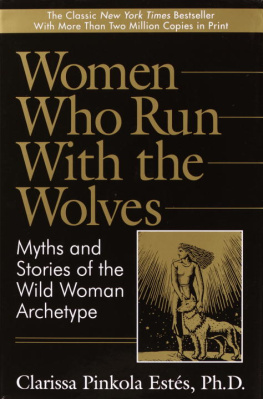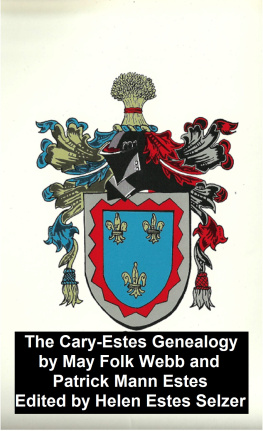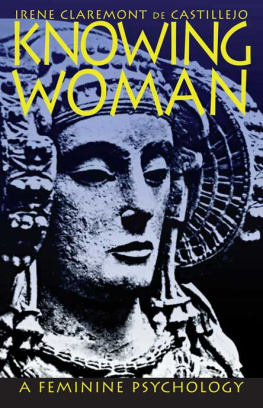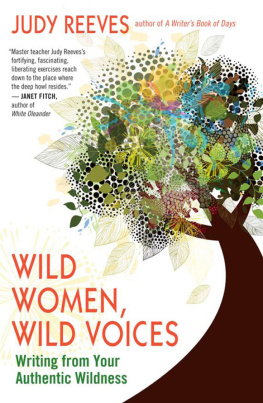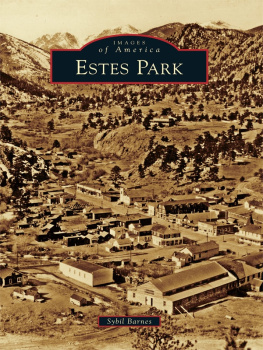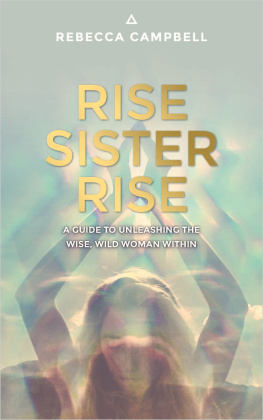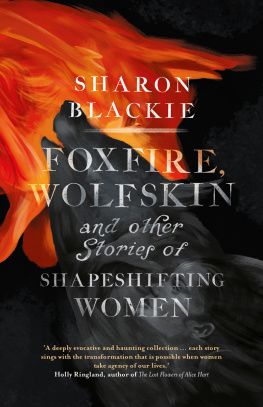INTRODUCTION
Singing over the Bones
Wildlife and the Wild Woman are both endangered species.
Over time, we have seen the feminine instinctive nature looted, driven back, and overbuilt. For long periods it has been mismanaged like the wildlife and the wildlands. For several thousand years, as soon and as often as we turn our backs, it is relegated to the poorest land in the psyche. The spiritual lands of Wild Woman have, throughout history, been plundered or burnt, dens bulldozed, and natural cycles forced into unnatural rhythms to please others.
Its not by accident that the pristine wilderness of our planet disappears as the understanding of our own inner wild natures fades. It is not so difficult to comprehend why old forests and old women are viewed as not very important resources. It is not such a mystery. It is not so coincidental that wolves and coyotes, bears and wildish women have similar reputations. They all share related instinctual archetypes, and as such, both are erroneously reputed to be ingracious, wholly and innately dangerous, and ravenous.
My life and work as a Jungian psychoanalyst, poet, and cantadora , keeper of the old stories, have taught me that womens flagging vitality can be restored by extensive psychic-archeological digs into the ruins of the female underworld. By these methods we ar e able to recover the ways of th e natural instinctive psyche, and through its personification in the Wild Woman archetype we are able to discern the ways and means of womans deepest nature.
The modem woman is a blur of activity. She is pressured to be all things to all people. The old knowing is long overdue.
The title of this book. Women Who Run With the Wolves: Myths and Stories of the Wild Woman Archetype , came from my study of wildlife biology, wolves in particular. The studies of the wolves Canis lupus and Canis rufus are like the history of women, regarding both their spiritedness and their travails.
Healthy wolves and healthy women share certain psychic characteristics: keen sensing, playful spirit, and a heightened capacity for devotion. Wolves and women are relational by nature, inquiring, possessed of great endurance and strength. They are deeply intuitive, intensely concerned with their young, their mates, and their pack. They are experienced in adapting to constantly changing circumstances; they are fiercely stalwart and very brave.
Yet both have been hounded, harassed, and falsely imputed to be devouring and devious, overly aggressive, of less value than those who are their detractors. They have been the targets of those who would clean up the wilds as well as the wildish environs of the psyche, extincting the instinctual, and leaving no trace of it behind The predation of wolves and women by those who misunderstand them is strikingly similar.
So that is where the concept of the Wild Woman archetype first crystallized for me, in the study of wolves. I've studied other creatures as well, such as bear, elephant, and the soul-birdsbutterflies. The characteristics of each species give abundant metaphoric hints into what is knowable about the feminine instinctual psyche.
The wild nature passed through my spirit twice, once by my birth to a passionate Mexican-Spanish bloodline, and later, through adoption by a family of fiery Hungarians. I was raised up near the Michigan state line, surrounded by woodlands, orchards, and farmland and near the Great Lakes. There, thunder and lightning were my main nutrition. Cornfields creaked and spoke aloud at night. Far up in the north, wolves came to the clearings in moonlight, prancing and praying. We could all drink from the same streams without fear.
Although I did not call her by that name then, my love for Wild Woman began when I was a little child. I was an aesthete rather than an athlete, and my only wish was to be an ecstatic wanderer.
Rather than chairs and tables, I preferred the ground, trees, and caves, for in those places I felt I could lean against the cheek of God.
The river always called to be visited after dark, the fields needed to be walked in so they could make their rustle-talk. Fires needed to be built in the forest at night, and stories needed to be told outside the hearing of grown-ups.
I was lucky to be brought up in Nature. There, lightning strikes taught me about sudden death and the evanescence of life. Mice litters showed that death was softened by new life. When I unearthed Indian beads" fossils from the loam, I understood that humans have been here a long, long time. I learned about the sacred art of self-decoration with monarch butterflies perched atop my head, lightning bugs as my night jewelry, and emerald-green frogs as bracelets.
A wolf mother killed one of her mortally injured pups; this taught a hard compassion and the necessity of allowing death to come to the dying. The fuzzy caterpillars which fell from their branches and crawled back up again taught single : mindedness. Their tickle-walking on my arm taught how skin can come alive. Climbing to the tops of trees taught what sex would someday feel like.
My own post-World War II generation grew up in a time when women were infantilized and treated as property. They were kept as fallow gardens ... but thankfully there was always wild seed which arrived on the wind. Though what they wrote was unauthorized, women blazed away anyway. Though what they painted went unrecognized, it fed the soul anyway. Women had to beg for the instruments and the spaces needed for their arts, and if none were forthcoming, they made space in trees, caves, woods, and closets.
Dancing was barely tolerated, if at all, so they danced in the forest where no one could see them, or in the basement, or on the way out to empty the trash. Self-decoration caused suspicion. Joyful body or dress increased the danger of being harmed or sexually assaulted. The very clothes on ones shoulders could not be called ones own.
It was a time when parents who abused their children were
simply called strict, when the spiritual lacerations of profoundly exploited women were referred to as nervous breakdowns, when girls and women who were tightly girdled, tightly reined, and tightly muzzled were called nice, and those other females who managed to slip the collar for a moment or two of life were branded bad.
So like many women before and after me, I lived my life as a disguised criatura, creature. L ike my kith and kin before me, I swagger-staggered in high heels, and I wore a dress and hat to church. But my fabulous tail often fell below my hemline, and my ears twitched until my hat pitched, at the very least, down over both my eyes, and sometimes clear across the room.
Ive not forgotten the song of those dark years, hambre del alma , the song of the starved soul. But neither have I forgotten the joyous canto hondo, the deep song, the words of which come back to us when we do the work of soulful reclamation.
Like a trail through a forest which becomes more and more faint and finally seems to diminish to a nothing, traditional psychological theory too soon runs out for the creative, the gifted, the deep woman. Traditional psychology is often spare or entirely silent about deeper issues important to women: the archetypal, the intuitive, the sexual and cyclical, the ages of women, a womans way, a womans knowing, her creative fire. This is what has driven my work on the Wild Woman archetype for over two decades.
A womans issues of soul cannot be treated by carving her into a more acceptable form as defined by an unconscious culture, nor can she be bent into a more intellectually acceptable shape by those who claim to be the sole bearers of consciousness. No, that is what has already caused millions of women who began as strong and natural powers to become outsiders in their own cultures. Instead, the goal must be the retrieval and succor of womens beauteous and natural psychic forms.

